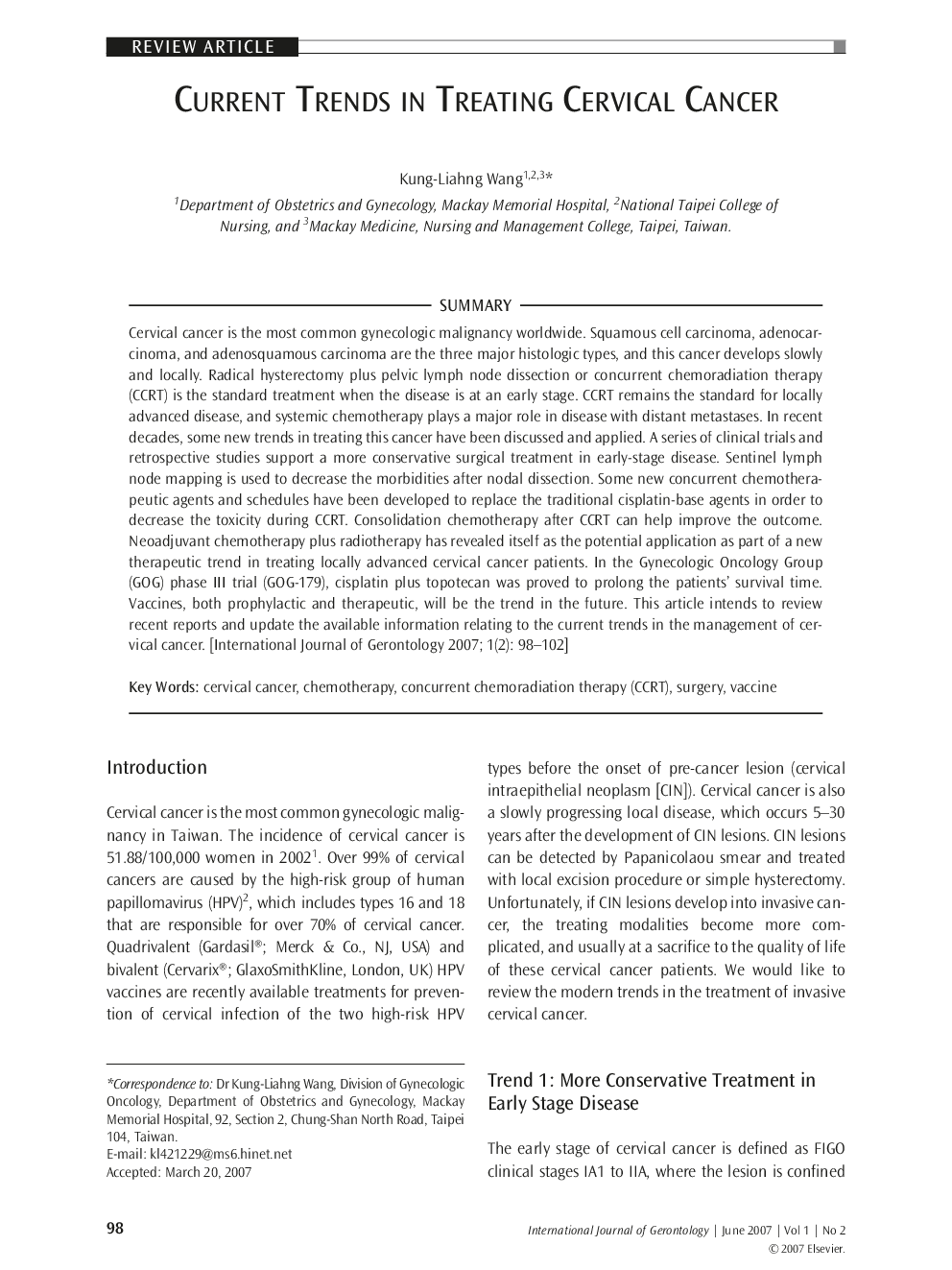| کد مقاله | کد نشریه | سال انتشار | مقاله انگلیسی | نسخه تمام متن |
|---|---|---|---|---|
| 3325620 | 1590534 | 2007 | 5 صفحه PDF | دانلود رایگان |

SUMMARYCervical cancer is the most common gynecologic malignancy worldwide. Squamous cell carcinoma, adenocarcinoma, and adenosquamous carcinoma are the three major histologic types, and this cancer develops slowly and locally. Radical hysterectomy plus pelvic lymph node dissection or concurrent chemoradiation therapy (CCRT) is the standard treatment when the disease is at an early stage. CCRT remains the standard for locally advanced disease, and systemic chemotherapy plays a major role in disease with distant metastases. In recent decades, some new trends in treating this cancer have been discussed and applied. A series of clinical trials and retrospective studies support a more conservative surgical treatment in early-stage disease. Sentinel lymph node mapping is used to decrease the morbidities after nodal dissection. Some new concurrent chemotherapeutic agents and schedules have been developed to replace the traditional cisplatin-base agents in order to decrease the toxicity during CCRT. Consolidation chemotherapy after CCRT can help improve the outcome. Neoadjuvant chemotherapy plus radiotherapy has revealed itself as the potential application as part of a new therapeutic trend in treating locally advanced cervical cancer patients. In the Gynecologic Oncology Group (GOG) phase III trial (GOG-179), cisplatin plus topotecan was proved to prolong the patients' survival time. Vaccines, both prophylactic and therapeutic, will be the trend in the future. This article intends to review recent reports and update the available information relating to the current trends in the management of cervical cancer.
Journal: International Journal of Gerontology - Volume 1, Issue 2, June 2007, Pages 98-102